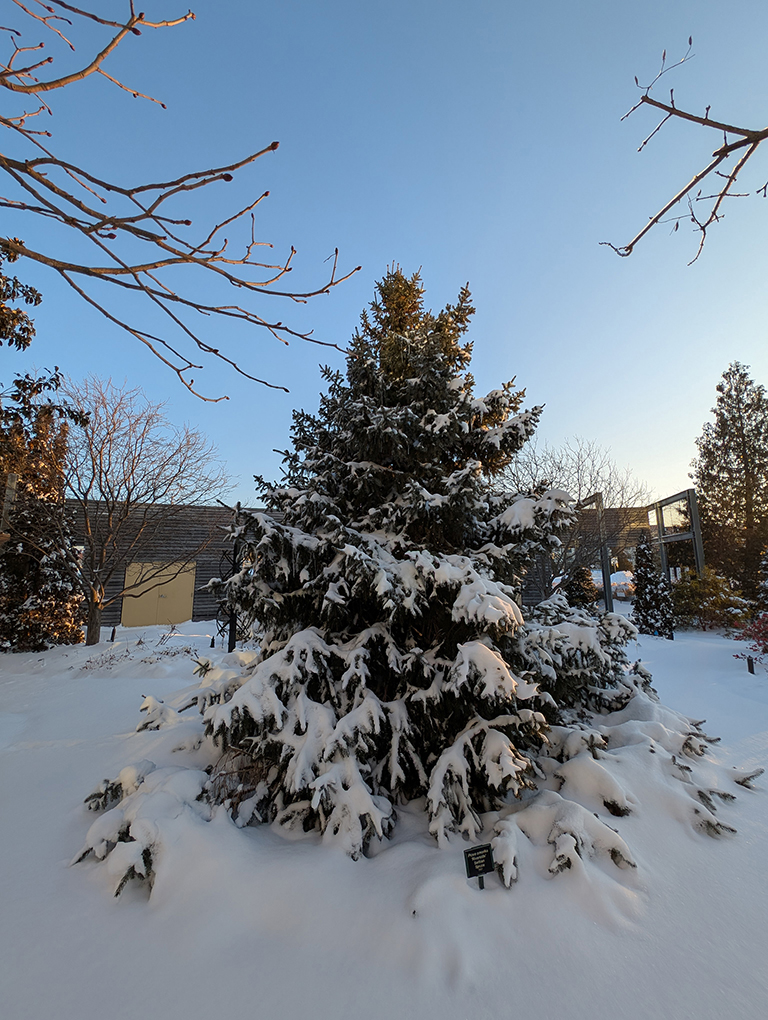Forever Green
A couple weeks ago, I had the opportunity to visit and sit in with the Junior Master Gardeners at Prairie Elementary. While we were finishing up our composting activity, I fielded a few questions from the students. Little did I know, I was about to receive a question that would keep me up at night. “Why do evergreens stay green all year round?” Of course, in true Markis Hill fashion, I gave the best, simplest answer I could muster. “It has to do with their vascular system.” Upon further research, I found that I was not entirely correct. So, let’s correct the record now. 
First, there is not one type of evergreen. Conifers, or cone baring woody plants, are what we typically think of when talking about plants being evergreen. However, the deciding factor is the native environment that the plant has adapted to. For example, spruce trees hold on to their needles all year long for several years. On the other hand, bald cypress trees drop their leaves every fall. When we look at the native environment of these two plants, they are very different. Spruce trees tend to be adapted to colder areas in high elevations and poor soils. Bald cypress trees are native to the swamps of the American southeast, which are much closer to sea level and contain a higher concentration of nutrients in the soil.
Let’s highlight a few advantages of each adaptation. Dropping leaves allow for a plant to protect itself from freezing temperatures and winter drought. In the fall, perennial plants will transfer their mobile nutrients out of their leaves and store it to be used next growing season. Without transporting those nutrients out of the leaves, they would become damaged, and those mobile nutrients would be lost to the plant. One downside of this adaptation is that it takes a lot of energy to grow a canopy of new leaves each spring.
On the other hand, holding on to leaves year-round saves the energy needed to grow new leaves. As the ground starts to thaw in early spring, available water and nutrients can be taken up by the plant and utilized for photosynthesis sometimes months before their broadleaf counterparts. This adaptation allows the plants to extend their growing season in an environment that already has a shortened period of ideal growing conditions. The obvious drawback is plants are susceptible to winter drought when temperatures are above freezing, the sun is out, and winds are strong.
Other types of evergreens include boxwoods (Buxus microphylla), bugleweed (Ajuga sp.), lenten rose (Helleborus sp.), and holly (Ilex sp.) also possess adaptations that protect their leaves from damage from freezing temperatures. By concentrating salts, sugars, and other secondary metabolites, these plants can lower the freezing point of the water inside their leaves. This is true as well for many conifer species that remain evergreen during the winter. Protecting their leaves in this way gives these plants a ready supply of nutrients for the arrival of more favorable conditions.
Evergreens are not just native to cold areas. Types of evergreens we don’t immediately associate with wintertime are tropical plants, houseplants, and desert cacti. While they do stay green all year, they are not native to environments with prolonged freezing temperatures, negating the need to protect their leaves from the cold. There are plenty of exceptions to the rule, but this is true for most plants adapted to warmer environments.
So, to the student at Prairie Elementary that asked that question, thank you for giving me inspiration to write about this very science-heavy topic.
by Markis Hill, Horticulture Ornamentals and Turf Extension Agent